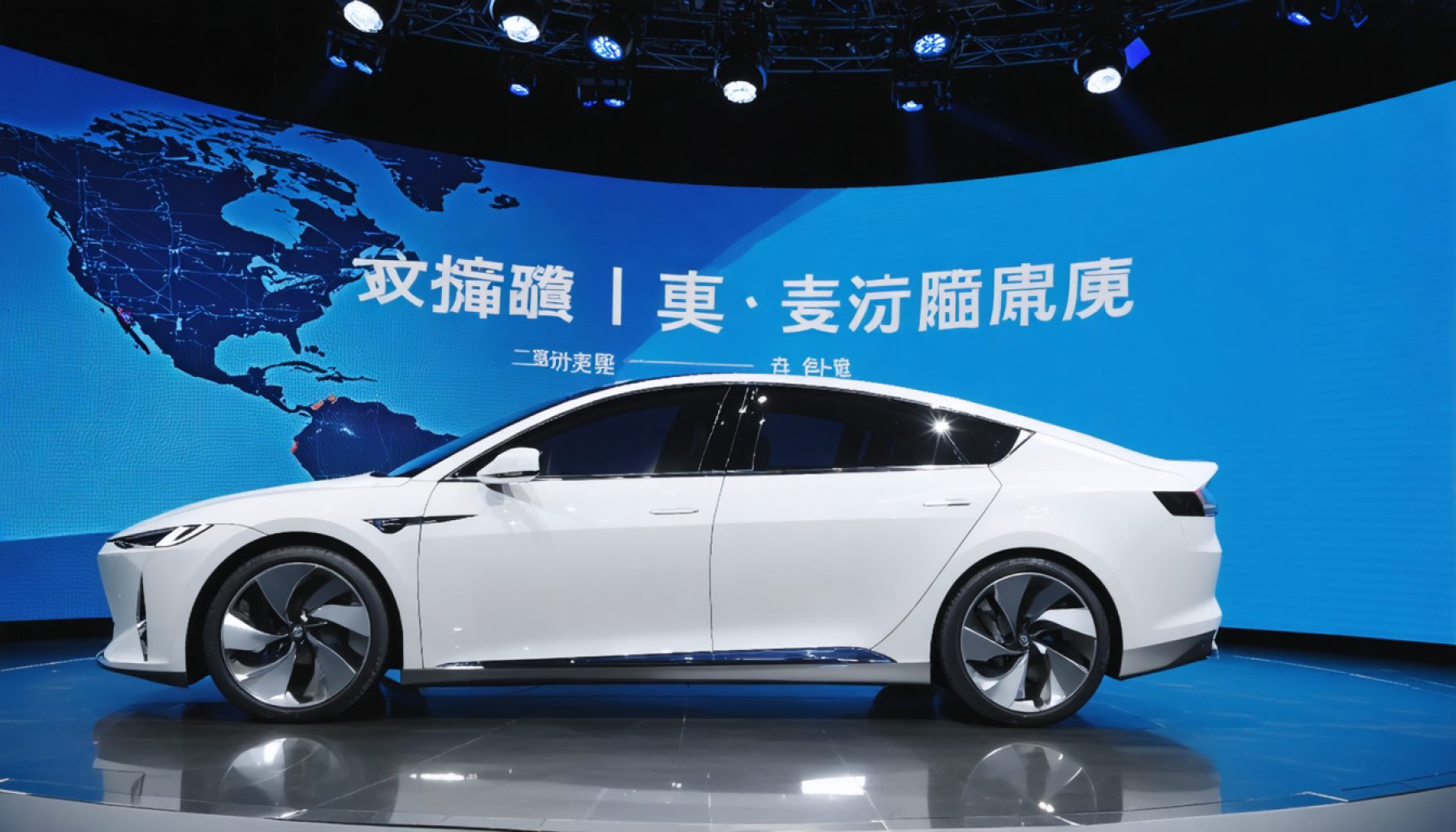
- BYD has surpassed Tesla as the leading battery electric vehicle (BEV) manufacturer globally, maintaining this position for two consecutive quarters.
- In Q1 2025, BYD delivered 416,388 BEVs, significantly outnumbering Tesla’s 336,681 units, reflecting a consistent growth trend.
- BYD’s success is attributed to its strategic innovation, market expansion, and focus on diverse consumer demographics, contrasting Tesla’s premium model approach.
- Mastery over the supply chain and sustainable practices have been crucial to BYD’s rise, emphasizing their vision for a cleaner, connected future.
- Analysts predict BYD will maintain its growth trajectory, capturing 15.7% of the global market share by the end of 2025.
- The evolving electric vehicle market underscores the importance of adaptability and innovation, with BYD and Tesla driving the green revolution.
The electric horizon is ablaze with a powerful new narrative. In a surprising twist that few industry experts predicted a few years ago, Chinese automotive giant BYD has seized the crown from Tesla as the world’s leading battery electric vehicle (BEV) manufacturer. This pivotal shift marks the second consecutive quarter that BYD has outperformed Tesla, according to authoritative reports and sales data, reshaping the contours of the global EV market landscape.
Dethroning the King
As the latest figures roll in, BYD’s supremacy becomes unmistakably clear. The company’s staggering delivery of 416,388 BEVs in the first quarter of 2025 significantly eclipses Tesla’s 336,681 units. BYD’s ascent, initiating back in Q4 2024 with a landmark 595,413 vehicle deliveries, compared to Tesla’s 495,570, signaled a new era for electric mobility.
This is not a mere fluctuation but a decisive trend, a tale of technological innovation and strategic foresight. BYD’s rapid expansion and adaptation to emerging market demands have been instrumental, shifting the balance of power from Silicon Valley to China’s burgeoning industrial heart.
A Strategy of Innovation
At the heart of BYD’s triumph lies its aggressive expansion strategy, a relentless pursuit of pioneering technology, and an acute focus on meeting consumer demands that has breathed new life into its brand. Unlike Tesla, which has concentrated primarily on premium models, BYD has embraced a broader market spectrum—offering vehicles that cater to diverse economic demographics, thus maximizing its reach and dominance.
A significant facet of BYD’s conquering formula is its mastery over the supply chain. With comprehensive control over battery production and an eye toward sustainable practices, BYD is not just selling cars; it’s crafting a vision of a cleaner, more connected future.
The Road Ahead
Analysts anticipate that BYD’s momentum will persist through 2025, capturing a formidable 15.7% of the global market share. As more regions target decarbonization, the demand for efficient, accessible electric vehicles intensifies—a demand BYD seems exceptionally poised to satisfy.
The Implications for the Industry
BYD’s rise is a testament to China’s growing influence over the global automotive sector and a reminder of the relentless pace of innovation driving the green revolution. For Tesla, this is not the end, but a compelling call to adapt and innovate further in an ever-competitive arena.
In this unfolding saga of electric mobility, the key takeaway is clear: the future of transportation lies in diversity, adaptability, and a keen understanding of global shifts. As BYD and Tesla continue their race towards sustainability, consumers, and the world alike are set to benefit from the ride.
Is BYD the New Giant in Electric Vehicles? Here’s What You Need to Know
Further Insights into BYD’s Market Leadership
BYD’s emergence as the top battery electric vehicle (BEV) manufacturer highlights a significant shift in the global electric vehicle (EV) landscape. Here are several crucial aspects to consider:
How-To Steps & Life Hacks: Understanding BYD’s Strategy
1. Diversified Product Portfolio: Unlike Tesla’s focus on luxury models, BYD caters to a broader audience by offering a range of models, from affordable to premium.
2. Vertical Integration: BYD’s control over its supply chain, particularly in battery production, gives it a competitive edge, reducing costs and ensuring a steady supply of critical components.
3. Sustainability Focus: By integrating eco-friendly practices, BYD not only meets regulatory demands but also attracts eco-conscious consumers.
Market Forecasts & Industry Trends
– Market Share: Analysts project BYD to secure 15.7% of the global EV market by the end of 2025.
– Increasing Global Demand: With countries worldwide pushing for decarbonization, demand for electric vehicles will soar, positioning BYD favorably in the coming years.
Controversies & Limitations
– Quality Perception: In some markets, Chinese automobile brands face challenges related to perceptions of quality and reliability.
– Geopolitical Risks: As a Chinese company, BYD may encounter trade barriers and regulatory hurdles in markets like the U.S. and Europe.
Reviews & Comparisons
– BYD vs. Tesla: While BYD provides a wider range of models and price points, Tesla’s strength remains in its high-end technology and brand prestige, particularly in autonomous driving.
Features, Specs & Pricing
– Affordability: BYD offers models in a variety of price ranges, making EVs accessible to more consumers.
– Battery Tech: BYD’s Blade Battery, known for its high safety and longevity, is a standout feature.
Security & Sustainability
– Battery Safety: BYD’s Blade Battery technology is designed to minimize the risk of fires, which is a critical factor for consumer confidence.
– Environmental Practices: Commitment to reducing carbon footprints in manufacturing and production processes.
Answering Pressing Questions
– Why is BYD overtaking Tesla?
BYD’s expansion into varied market segments and its production of affordable, yet high-quality vehicles has broadened its consumer base compared to Tesla’s more niche focus.
– What does this mean for Tesla and other EV makers?
Tesla must innovate and potentially diversify its model range to reclaim leadership. Other manufacturers are likely to follow BYD’s strategies for cost and supply chain efficiency.
Actionable Recommendations
1. For Consumers: Explore diverse EV options beyond traditional brands such as Tesla. BYD offers reliable and cost-effective alternatives.
2. For Investors: As the EV market expands, consider investing in companies like BYD that showcase strategic foresight and innovation.
3. For Industry Stakeholders: Focus on eco-friendly, cost-efficient models and embrace sustainable practices to remain competitive.
Explore more about the electric vehicle industry on BYD’s official site and Tesla’s official site.
Conclusion
BYD’s rise to prominence reshapes the BEV landscape, demonstrating that adaptability and a wide-reaching approach can yield leadership. Embracing innovation, sustainability, and consumer demands are key components for any company wishing to thrive in this dynamic sector.



